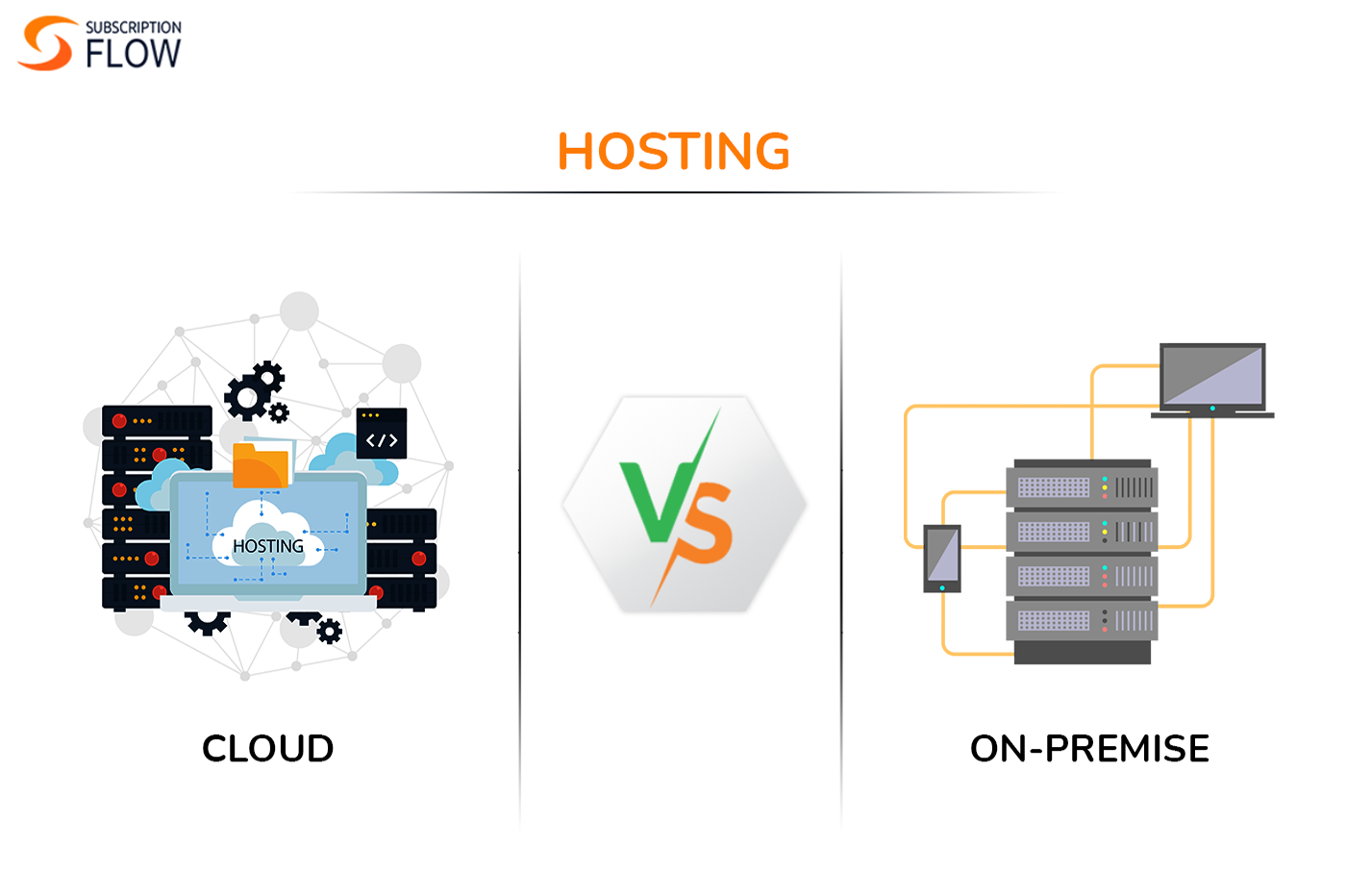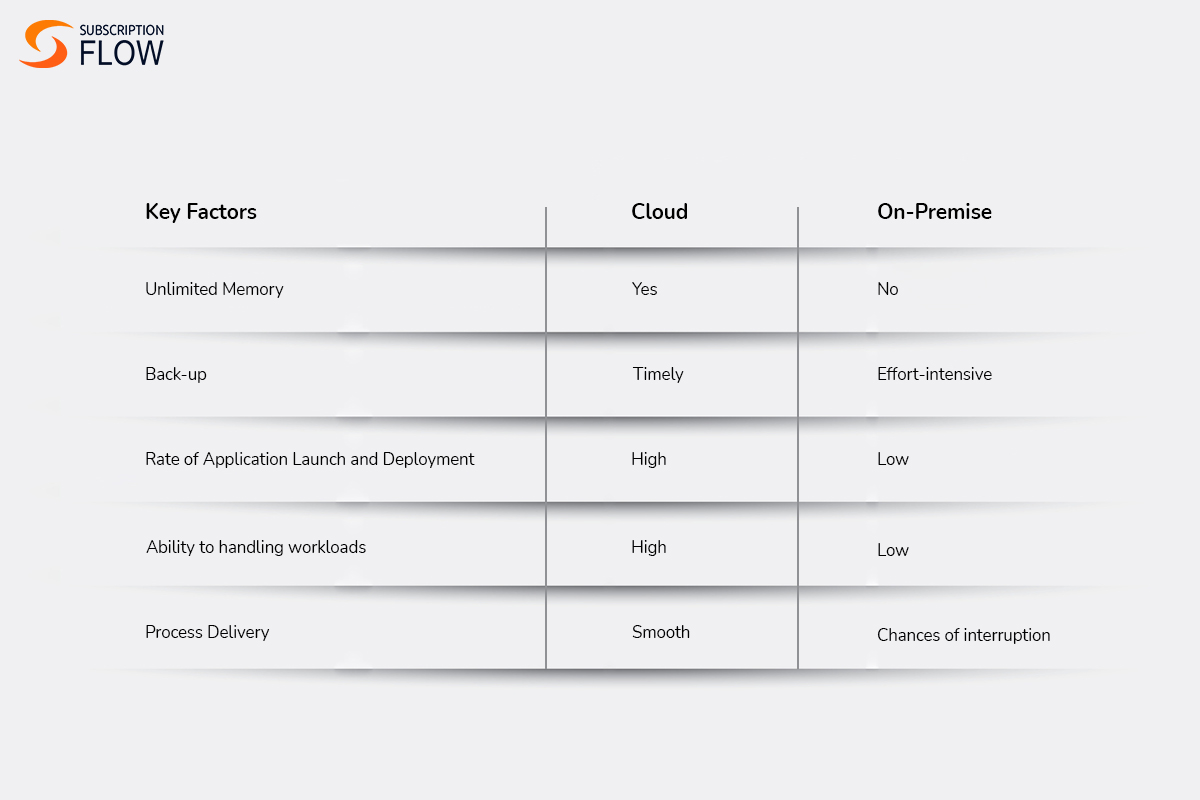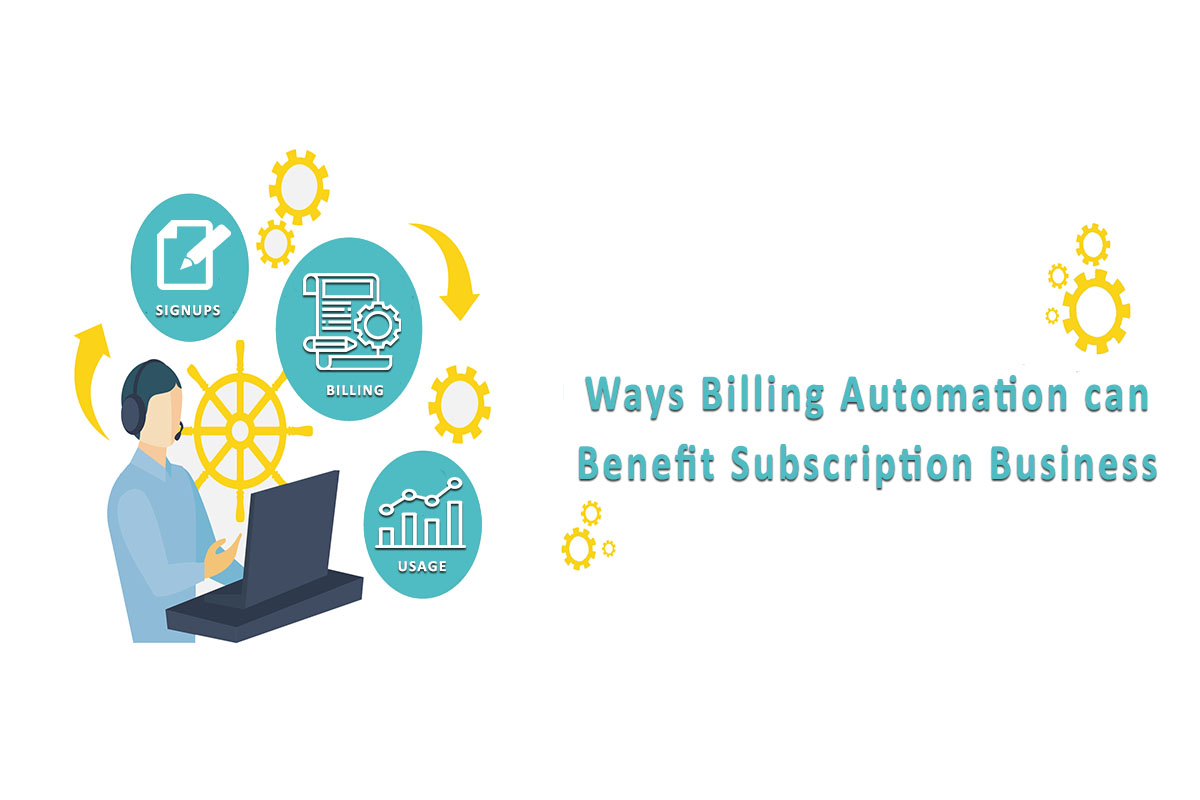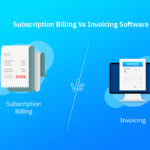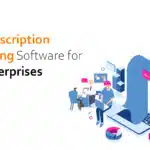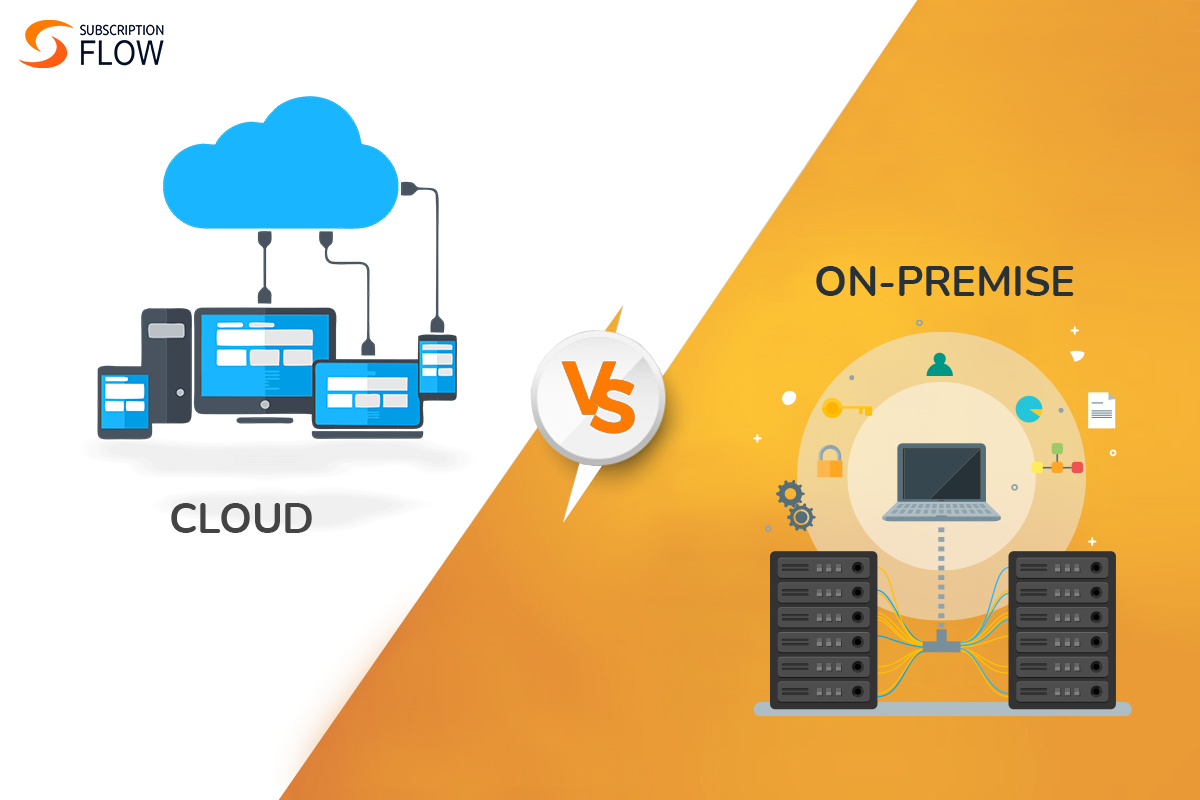
On-Premise Vs Cloud-Based Billing Solution: Who Wins the Race?
The digital world is continuously evolving. Every day, new software and applications are introduced with advanced features. However, it becomes confusing for the user to build the right tech stack for a business.
If you are managing your business from an internal network that does not connect to the cloud, then by now, you would have been given this advice to shift to a cloud-based system. And of course, like anyone else, you will be thinking that when everything works fine, then what is the reason to invest in a cloud-based system?
In this article, we are going to discuss the on-premise vs cloud subscription billing solution debate so that retailers in the subscription business markets would make the right decision at the right time. First, it is important to have a precise idea of what is on-premise and cloud all about.
On-Premise Vs Cloud Billing
On-premise software or infrastructure is installed and runs locally on a company’s servers or hardware. The company is responsible for managing and maintaining the software and hardware, including security, updates, and backups. People mostly opt for on-premise software because they spend heftily on their high-tech hardware, and they want to get the full out of it.
Cloud, on the other hand, refers to software or infrastructure that is delivered and managed remotely over the internet.
Also Read: SubscriptionFlow—The Best Subscription Billing Solution for Cloud Computing Services Providers
The following are some of the factors based on which we are going to compare on-premise recurring billing solutions and cloud-based billing systems:
1. Required Resources
First things first, retailers always consider their financial resources whenever they are advised to purchase an automated system. In the case of on-premise software, businesses spend a huge amount on hardware to establish a local network. So, when it comes to the adoption of subscription management software for the company, they go for on-premise so that they can utilize their high-tech hardware rather than investing in a cloud-based solution.
You must understand the need of the hour. If your competitors or any other business is shifting to a cloud-based solution, then there is a reason behind it. First, cloud-based billing solutions offer subscriptions. And as a retailer, you can opt for the subscription plan that meets your business needs and suits your financial standing.
Second, there are a lot more factors where cloud-based platforms outperform in comparison to on-premise software.
2. System Flexibility
The overall flexibility of the cloud is far more than the on-premise software. The biggest attraction of cloud-based platforms is that they can be integrated with any third-party application and most of the time be accessed with the single sign-on (SSO) option. So, they offer subscription businesses a complete business solution. There is no need for any additional hardware. The point is when cloud-based billing solutions are used, you can accommodate changes in the market easily.
On-premise software cannot be remotely managed so, it is difficult to use them in the changing tech environment.
3. System Accessibility
When it comes to access to the system, cloud-based platforms can be assessed from anywhere in the world. So, they enable users to cater to customers from across the world. For instance, many eCommerce platforms are able to take and deliver products from across the border just because they use cloud-based software. Cloud-based billing solutions increase the productivity of a business. It is simple, you can access and onboard a diverse customer base and increase the flow of recurring revenue in the revenue stream. However, on-premise software cannot help you reach out to international clients or go beyond borders. So, there are attached limitations that surely limit the opportunities to grow and scale with time.
4. Maintenance of the System
When it comes to system maintenance, SaaS cloud-based platforms are maintained by the vendor. On the other hand, on-premise software are maintained by the organization or the company that is opting for this business solution. In the case of cloud-based platforms, the provider is responsible for maintaining the software and infrastructure, including security, updates, and backups. This means that the provider handles routine maintenance tasks, such as applying software updates, upgrading hardware, and monitoring system performance. Also, cloud-based solutions typically have a centralized infrastructure, which means that the provider can manage and maintain the software and infrastructure more efficiently. Cloud-based solutions typically have better disaster recovery and business continuity capabilities than on-premise solutions. This is because the provider can replicate data across geographically dispersed data centres, which provides redundancy and helps ensure that data is available even in the event of a localized disaster.
Conclusion
By now it is evident that in this race of on-premise vs cloud subscription management software, cloud-based business solutions win. The world is progressing and to match your pace with it, you need to invest your subscription business resources where sustainable growth can be achieved. The cloud-based business solution is the first thing where you need to invest money so as to scale and grow with time.
SubscriptionFlow is a cloud-based subscription management software. If you are still on manual recurring billing or using any other on-premise platform to fulfil your business needs, then it is high time to come towards the automated subscription management software. Forget on-premise, and become part of the cloud community because the future of the subscription business industry is CLOUD.
Schedule a demo for SubscriptionFlow to see how it will equip your business with the power of its seamless cloud-based features.
